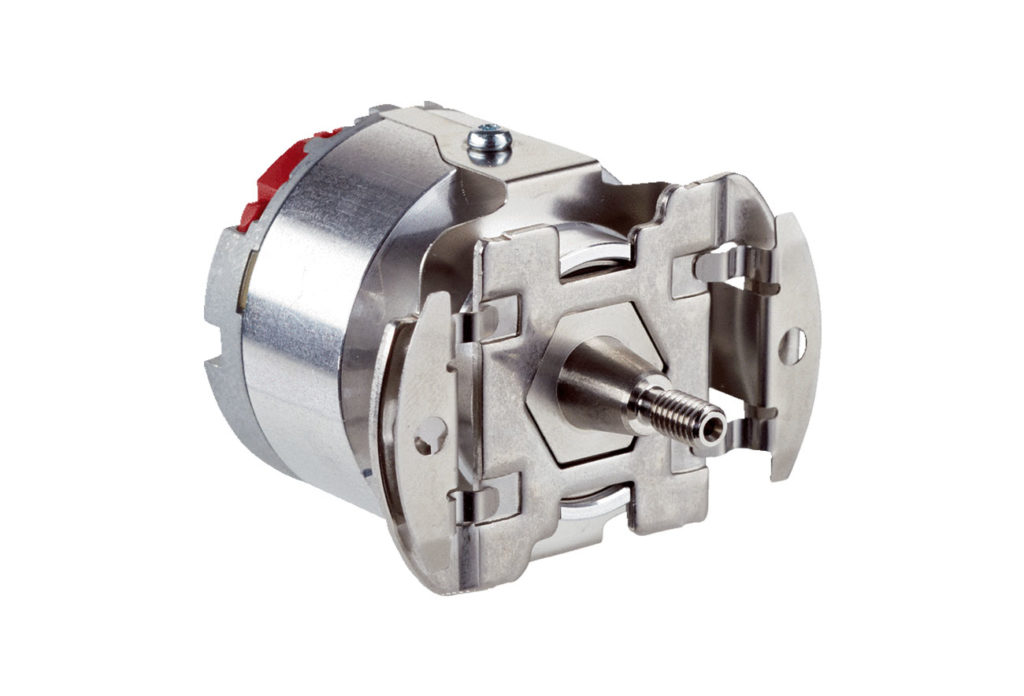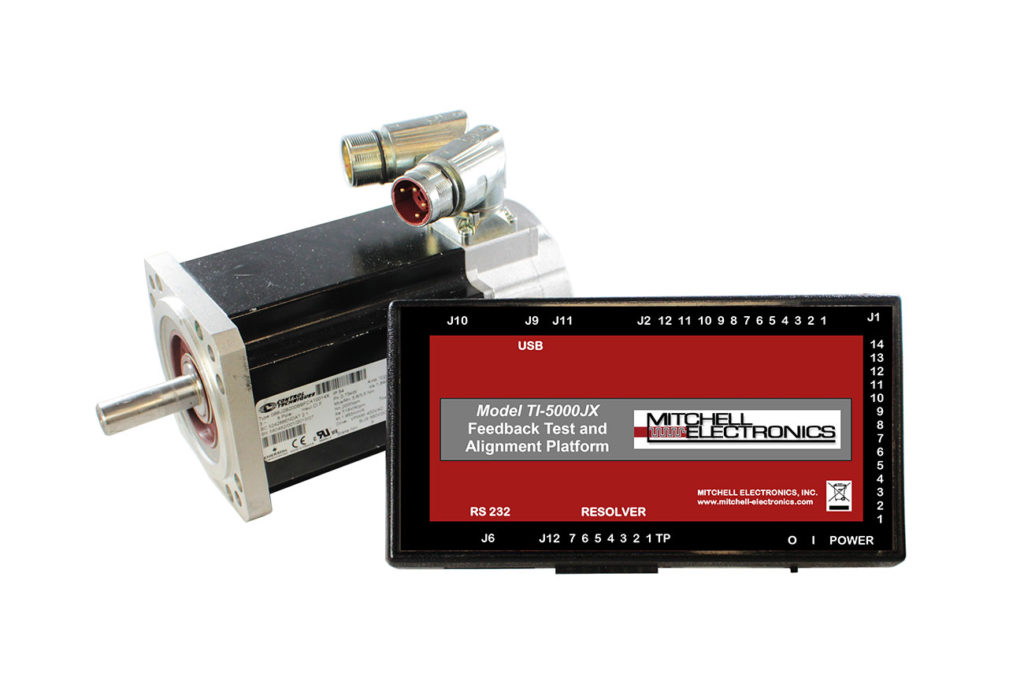How Does a Servo Motor Encoder Work?
An encoder is an electromechanical device that converts motion or position into an electrical signal. This signal can be used to determine speed, direction, and position, making encoders essential components in motion control systems. Among the most critical applications for encoders is their integration with servo motors, where they provide the feedback necessary for precise, closed-loop control.
At Mitchell Electronics, Inc. we specialize in supporting the testing, repair, and analysis of encoders in servo systems.
What Does an Encoder Do?
At its core, an encoder reads motion, either linear or rotary, and converts it into a digital or analog signal that a control system can interpret. In servo motor systems, the encoder is responsible for reporting the motor shaft’s position back to the controller, enabling real-time corrections to ensure the motor performs exactly as commanded.
For example, in a robotic arm, there may be several servo motors controlling several axes of movement or rotation. Each of these servo motors would have an encoder providing position and speed information to the controller. With this information the controller could be able to determine that a joint has moved 45 degrees for example, allowing the system to confirm that the motion corresponds to the input command. If not, the controller adjusts the voltage or current to correct the discrepancy. This feedback loop is what makes servo motors “intelligent” and highly accurate.
What is a Servo Motor Encoder?
Types of Encoders
Encoders come in several forms, each suited to specific applications:
 Incremental Encoders produce a series of pulses as the shaft rotates. The controller counts these pulses to track movement. While simple and cost-effective, incremental encoders do not provide absolute position data on power-up, and therefore require indexing, which means turning the encoder until it passes through the zero position. The most common type of incremental encoders use an AB Quadrature style of encoding. A Z pulse is often included to indicate the zero position. When the Z pulse is not included, then the encoder is usually not used in a position servo function but rather in a speed function as a type of tachometer.
Incremental Encoders produce a series of pulses as the shaft rotates. The controller counts these pulses to track movement. While simple and cost-effective, incremental encoders do not provide absolute position data on power-up, and therefore require indexing, which means turning the encoder until it passes through the zero position. The most common type of incremental encoders use an AB Quadrature style of encoding. A Z pulse is often included to indicate the zero position. When the Z pulse is not included, then the encoder is usually not used in a position servo function but rather in a speed function as a type of tachometer.
Absolute Encoders provide a unique position value for each shaft angle. Many types use either binary or gray code. This means the system knows the exact position immediately upon startup, but may require a cable with many wires to carry all the bits.
Serial Encoders provide position data using a communications protocol. A serial encoder may operate with only two wires for communications: transmit and receive. The receive wire may be used to send commands to the encoder to receive position or other parameters and the response is sent back to the drive or controller on the transmit line. The position information is often absolute but does not have to be. Therefore one must be careful with nomenclature
Resolver-Based Encoders and Sine-Cosine Encoders are also used in harsh environments or high-precision applications. They generate analog signals that are interpreted for precise angular feedback.
How Encoders Work with Servo Motors
In a servo system, the encoder is mounted on the motor shaft and tightly integrated into the feedback loop. As the motor spins, the encoder tracks the shaft’s position and sends this data to the motor controller, which then compares the actual position to the desired one.
This loop enables micro-adjustments to speed, torque, and positioning, which are essential in high-performance applications like CNC machines, robotics, and semiconductor manufacturing. Without the encoder’s continuous stream of data, the controller would be “flying blind,” unable to correct for overshoot, undershoot, or positional drift.
Modern servo systems often use digital encoders with high resolution, allowing for thousands, or even millions, of counts per revolution. This granularity is key for applications demanding submillimeter precision.
Read more: 7 Steps to Servicing a Servo Motor Without Compromising Encoder Alignment
Encoder Diagnostic Tools and Support
 Mitchell Electronics provides tools and software that allow maintenance teams to test encoders independently of the drive or controller. For example, our TI-5000 test system can simulate a drive connection to verify that the encoder is functioning correctly. This is critical during machine troubleshooting or commissioning, when it’s necessary to isolate whether a fault lies in the motor, encoder, or controller.
Mitchell Electronics provides tools and software that allow maintenance teams to test encoders independently of the drive or controller. For example, our TI-5000 test system can simulate a drive connection to verify that the encoder is functioning correctly. This is critical during machine troubleshooting or commissioning, when it’s necessary to isolate whether a fault lies in the motor, encoder, or controller.
Our tools also support alignment procedures, where the encoder must be mechanically and electronically synced with the motor’s rotor to ensure accurate feedback. Improper alignment can lead to erratic behavior or even damage to system components.
How to Test a Servo Motor Encoder
Ensuring Accuracy
Encoders play a vital role in enabling precision and control in servo motor applications. From simple pulse counting in incremental encoders to absolute position feedback in high-end systems, the encoder is the bridge between mechanical motion and digital control.
Mitchell Electronics helps keep these systems running smoothly by offering tools to test, align, and verify encoder performance, ensuring that today’s automation systems remain as accurate and reliable as possible. We also provide training, coaching, and support services.
Read more: Encoder Alignment Isn’t Important—It’s Critical.
Servo Motor Preventive Maintenance Guide
Now that you know a little about encoders, learn how to keep them – along with the equipment they power – running at peak efficiency. Information can be found in this in-depth guide: The Manufacturer’s Preventive Maintenance Checklist – Mitchell Electronics, Inc.
Here you’ll find insights into:
- The measurable benefits of preventive maintenance
- The most common causes of machine downtime
- Servo motor maintenance steps
- Maintenance tools and best practices
- Maintenance steps to follow on a regular basis
Questions? Contact us to learn more about our complete line of servo motor repair products, services, and training options!

